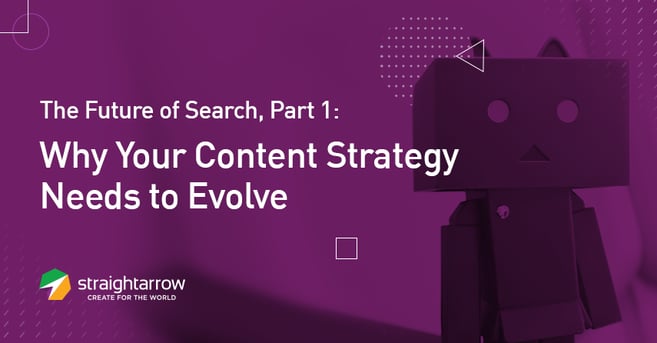
With every New Year that rolls in, four words follow from everyone’s mouths, sure as clockwork: “New year, new me.”
At this point, you may already think that this is a tired old cliche. One area where it most certainly isn’t, though, is marketing.
To be more specific, content marketing.
Survival of the fittest (content)
You don’t have to be Charles Darwin to understand the importance of adapting in order to survive. More often than not, those who remain obstinate in their ways and refuse to evolve get swept up in the waves of change instead of riding them.
Content marketing is no different.
Let’s examine how search engine optimization (SEO) works nowadays, as opposed to how things were, say, a decade ago.
Back then, keyword stuffing, content spamming, and other black hat SEO techniques — in other words, techniques completely focused on “gaming the system” of search engines — dominated the digital marketing landscape. Doing all those things in 2018 would make you and your business look like laughingstocks, especially if you present yourself as a digital marketing expert.
Of course, there’s also white hat SEO, which many call “ethical SEO.” This strategy focuses on the human aspect of the search engine ranking process — relevant keywords, careful linkbuilding, backlinking, and providing useful and helpful content that online users would actually like to read.
The SEO shift
Then came mobile browsing, and with it, the need to make sure that your online content is mobile-friendly in terms of display and function — yet another factor in SEO rankings.
As Google rolled out new search algorithms (beginning with the infamous Panda update, which effectively curb-stomped content farms and other forms of online flotsam) and started putting more emphasis on quality content in order to provide its users with something of legitimate value, brands were forced to choose whether to evolve or die in the digital arena.
Nowadays, it’s less about keyword rankings and more about context: where you’re located, what you’re looking for, the actual relevance of the content, and so on. Keyword stuffing won’t get you very far anymore, and rightly so.
In other words, the world of SEO did not (and will likely never) stagnate.
And if you want your business to stay relevant in it, you need to not just anticipate the changes in the future of search marketing, but also move along with them.
Smarter search methods, smarter searching
In a sense, we as answer-seekers have also evolved. As HubSpot noted in a recent blog post, it has become increasingly common to see full-sentence search queries rather than just keywords or broken phrases. We’re no longer using search engines are mere tools — we’re communicating with them, which is why Google has been spending quite some time perfecting the art of answering back.
Its new search algorithm, which takes phrases instead of just keywords into consideration, has made it of utmost importance to shift the focus from keywords to actual content topics. Google is now learning how to become smarter; how to understand the thought and meaning behind the questions we feed into the search bar.
A sturdy foundation: Pillar content
This is where the concept of pillar content, also known as cornerstone content, comes in.
Truth be told, it’s not a new concept; it has just become more important and relevant today. In summary, a pillar page is a landing page that talks about a specific topic in adequate detail. It’s not a keyword-stuffed fluff piece; it’s an all-in-one, highly informative source about the topic, meant to be the focal point around which your entire approach to your topic-specific content is anchored. A typical pillar page has a word count surpassing a couple of thousands, and incorporates video, images, and other forms of media into its body. An effective pillar page has the following characteristics:
- It gets a healthy amount of organic traffic.
- It has a high authority rating.
- It is free for everyone to access; no one has to enter an email address or provide a telephone number just to see it.
- It is hosted on a URL that actually covers the core topic.
So now that you know what you should change about your content strategy, the next question is: How exactly are you supposed to do that? Fortunately, that will be answered… in a future blog post, that is. Stay tuned for Part 2!
Keep updated with the latest content and search engine optimization trends in the digital marketing landscape. Subscribe to the StraightArrow blog.









Comments